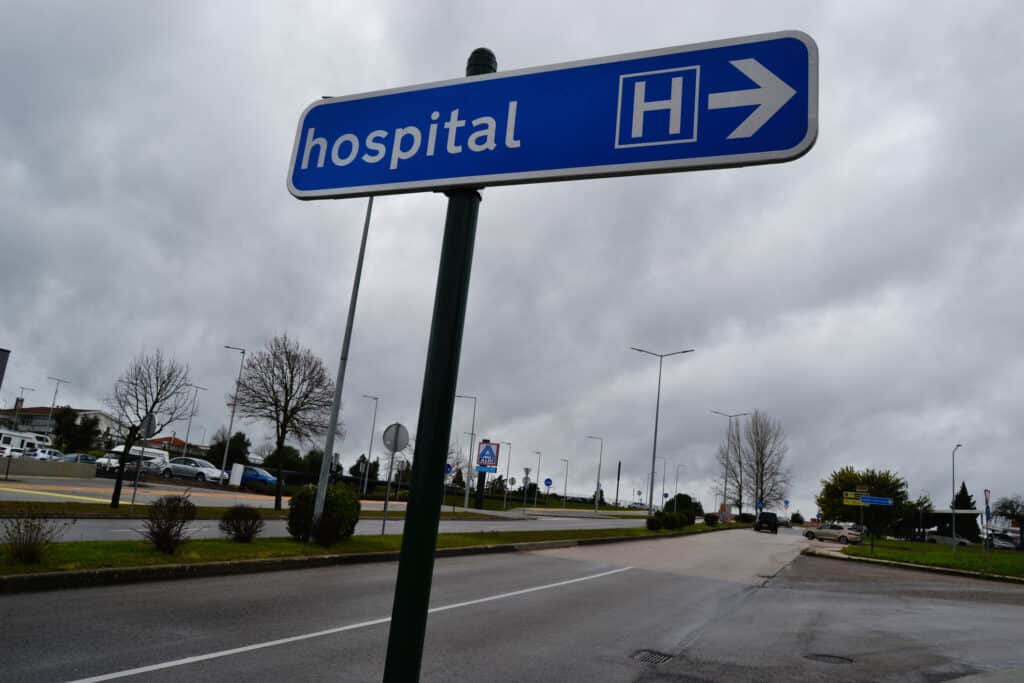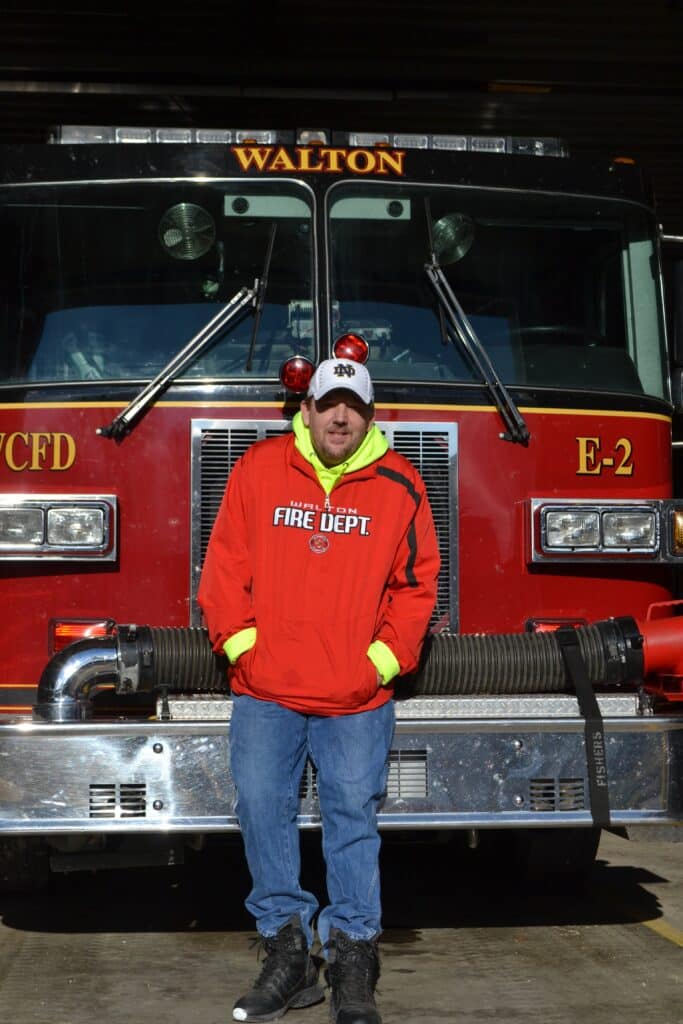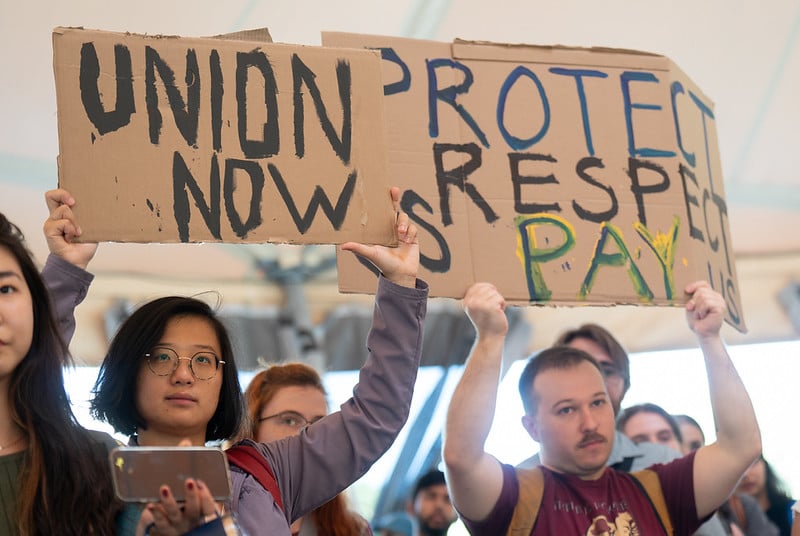
Letting Rural Health Care Bleed Out
By David McCall
USW International President
When Marketa Anderson’s daughter sustained injuries in a car crash, an ambulance rushed her to the emergency department at Fairview Range Medical Center in Hibbing, Minn., for care.
Anderson’s mother likewise received skilled, compassionate treatment at the hospital while battling cancer, the facility’s close proximity to her home making the fight a little more bearable.
And when Anderson herself has a doctor’s appointment, she goes to a clinic that’s attached to the medical center and staffed by the same dedicated team of physicians, nurses and other health care professionals.
The hospital has healed, saved and comforted families on Minnesota’s Iron Range for decades. But now it’s on a list of about 340 rural hospitals imperiled by congressional Republicans, who want to gut Medicaid in a new budget bill so they can extend tax breaks for the rich.
“If we lose our hospital, it’s going to affect everybody,” observed Anderson, president of United Steelworkers (USW) Local 9349, which represents licensed practical nurses (LPNs) at the medical center as well as various groups of workers at the clinic.

“It’s a vital part of our community,” she said of the hospital. “When we get sick, there’s where we go. They have a state-of-the-art breast center. We just had a shooting in town, and one of the victims went there.”
USW-represented taconite miners and other union workers in Hibbing and other parts of St. Louis County have quality health care coverage. But many other residents in poverty-plagued pockets of the region do not, said Anderson, explaining why Medicaid payments to Fairview Range play a pivotal role in sustaining a fragile health care network benefiting all.
The same is true in rural and remote areas across the country. That’s why organizations like the American Hospital Association, the Cecil G. Sheps Center for Health Services Research and the National Rural Health Association all warn that recklessly slashing billions from Medicaid would deal a dangerous blow to rural hospitals already struggling to keep the doors open.
At the request of U.S. Sen. Ed Markey of Massachusetts and other Senate Democrats, the Sheps Center identified hospitals it considers to be in greatest danger of closing, reducing services or converting to a different kind of facility in the event of Medicaid cuts. All of the 300-some facilities on the list are already financially strained or serving high numbers of Medicaid-reliant patients.
In Minnesota, Fairview Range and a Mayo Clinic location in Fairmont, a few hundred miles southwest of Hibbing, made the list.
Other states face the virtual elimination of rural health care, with 35 hospitals in Kentucky, 33 in Louisiana and 21 in Oklahoma identified as threatened by the Republican push to cut Medicaid.
“People will die,” Markey predicted in urging senators to vote against the measure later this week.
Slashing Medicaid payments to hospitals means hindering or blocking access to a range of services essential to healthy communities—urgent and emergency care as well as diabetes management, behavioral health, cardiology, hospice, orthopedics, oncology and surgery, among many other examples.
Fairview Range offers those kinds of services and more. On its website, the facility boasts of the five-star rating it garnered in the 2020 “Hospital Compare” quality survey by the Centers for Medicare & Medicaid Services. It’s also proud of a partnership with the University of Minnesota that offers patients access to “breakthrough medicine discovered at the state’s premier research university.”
Losing the hospital would force residents to travel an hour or longer to access much of the care now offered at Fairview Range, Anderson said, recalling how grateful she was for the hospital when her mom received cancer treatment four days a week every three weeks.
“Every morning, I would take her there and drop her off. On my break, I would go and pick her up. If that hospital hadn’t been there, I would had to take a week’s vacation every three weeks to take her to Duluth,” about 75 miles away, she said.
Medicaid cuts would exacerbate a crisis that’s already pummeling rural hospitals and forcing some residents, including the elderly and people with chronic conditions, to go without care.
Hundreds of rural hospitals have closed over the past two decades while others eliminated services, such as emergency departments or obstetrics units, or often because the current Medicaid payment rates are woefully insufficient and fail to cover the cost of care.
Rural hospitals also serve as major employers. Their workers patronize local businesses, support schools and pay the taxes that keep police, firefighters and road crews on the job.
When these facilities close or lay off workers, the ripple effect pushes struggling communities ever further behind.
Instead of scaling back federal support for rural hospitals, the government needs to increase it. Hospitals anchor rural health care. When they’re forced to close, related providers and services often disappear as well.
Remote communities become health care deserts.
“It’s not like in the cities, where you have urgent care or pop-up clinics on every block,” observed Anderson, referring to walk-in or storefront medical facilities sometimes called “docs in a box.”
“There are no doctors in boxes here,” she said.
“We need our hospital,” stressed Anderson. “It’s part of the landscape. It’s always been here.”
By clicking Sign Up you're confirming that you agree with our Terms and Conditions.
Related Blogs
Ready to make a difference?
Are you and your coworkers ready to negotiate together for bigger paychecks, stronger benefits and better lives?

